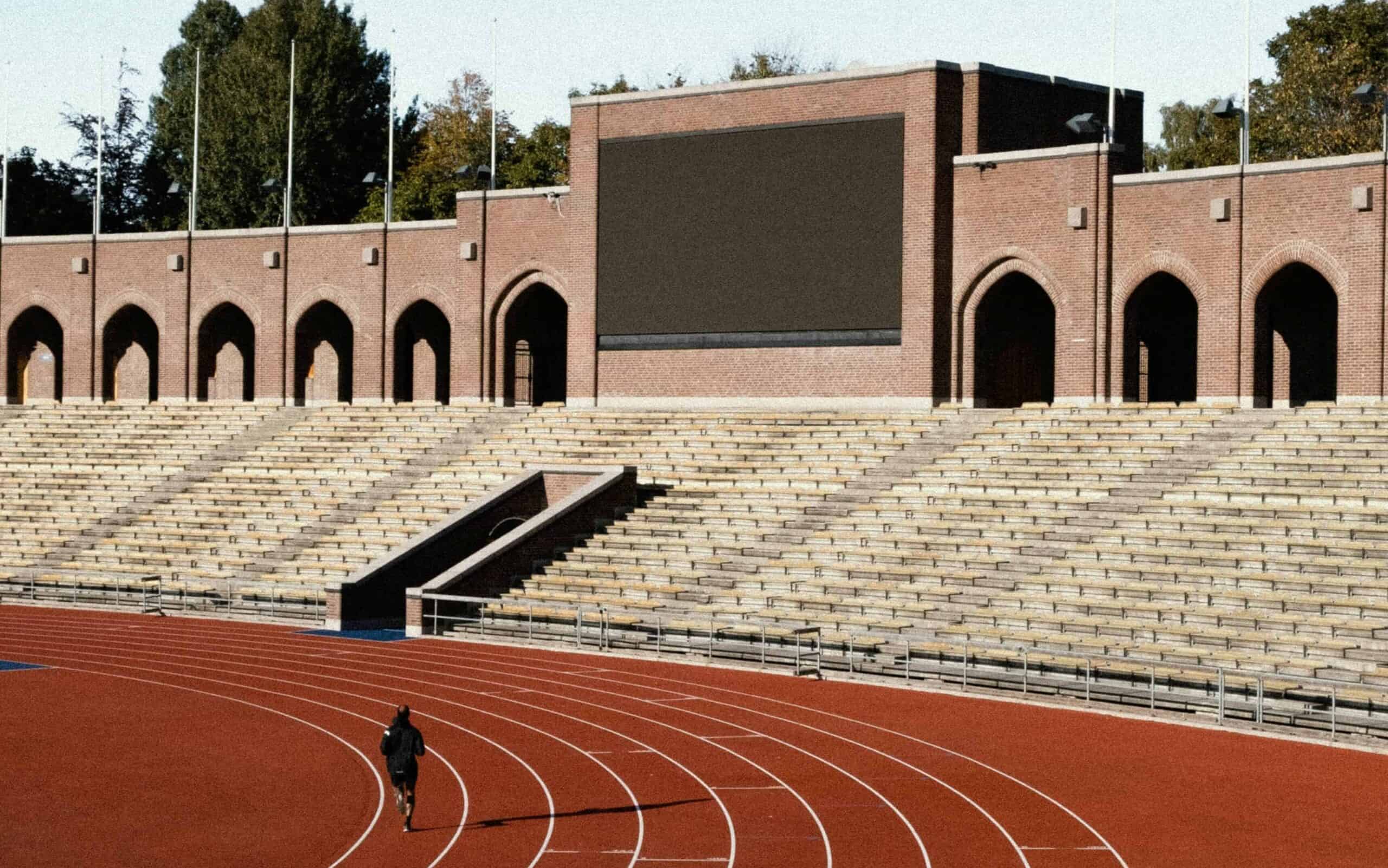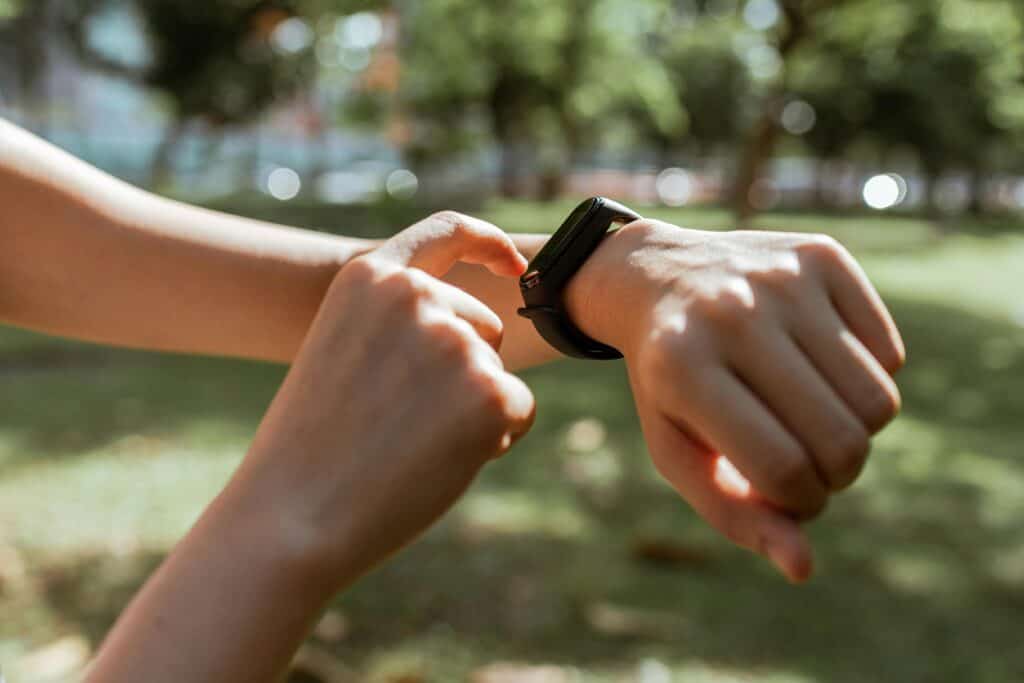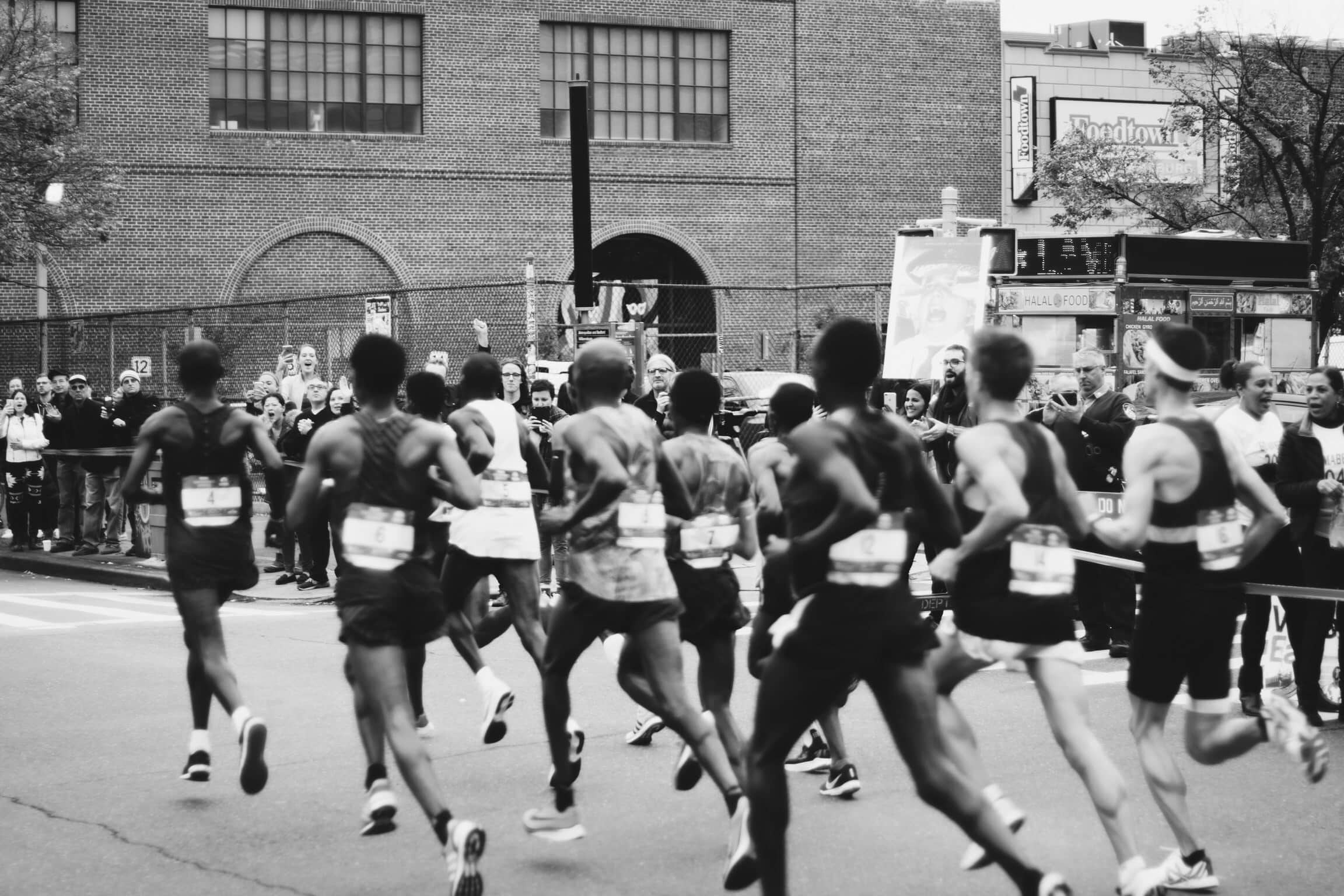Whether your goal is to complete 13.1 miles by a certain time, run faster and beat a personal record, or simply make it to the finish line, the right half marathon pacing is the secret to a successful (and less painful) race.
Quick math lesson: Pace is time divided by distance. It represents how fast something or someone is moving. In the context of running, pace usually refers to how fast you’re covering a mile or kilometer. In an endurance race, having a pacing strategy prevents you from coming off the start line too hot or saving too much for the end. The ideal half marathon pacing strategy helps you expend your energy as evenly as possible so you can run fast while still making it 13.1 miles.
As a professional runner, coach, and author, I enjoy every distance from the 3,000-meter steeplechase to the marathon — but the half marathon race has a special place in my heart. I’ve qualified for two World Half Marathon Championships on behalf of Team USA (2018 and 2020) and have run a personal best of 1:09:40.
Here’s what I’ve learned is the best strategy for how to pace a half marathon.

The Best Way to Use a Half Marathon Pace Chart
The first step in any pacing plan: Identify your goal time.
From there, consult a half marathon pace chart to determine the corresponding pace per mile.
If you don’t know what finish time to aim for, make your best guess based on your training as well as results from any recent races you’ve run.
Some popular workouts that will prepare you for a half marathon include:
- 3 x 3 miles with 3-4 minutes jogging rest
- 6-8 x 1 mile with 2 minutes jogging rest
- A tempo run of 6-8 miles
Work up to these sessions, hone your half marathon pacing skills within each, and observe how the pace you’re able to maintain on your recovery and long runs naturally gets faster.
Long runs are especially valuable when it comes to preparing for a half marathon and setting a goal for the race. Without turning it into a race, at least a few times over the course of your build-up, you can use your weekly long run (anywhere in the vicinity 10 miles) to see what pace feels hard but doable.
Then, when setting your goal for the race, you can expect to run a little quicker than you do in training, thanks to a combination of adrenaline, competition, and rested legs (assuming you incorporate some sort of taper).
But when in doubt, it’s always better to err on the slower side and finish strong than to go out too hard and hit the dreaded wall.

How to Track Your Splits
A running split is the time it takes to cover a defined distance, such as a mile or kilometer. Knowing your split can be a helpful metric to use when keeping track of your half marathon pacing.
There are a few different ways to do this.
- Wear a GPS running watch. This is probably the easiest way to track your splits. Most watches can tell you your current pace and your average pace on the run so far. Once you’ve ended a run, you can also look back at your mile or kilometer splits from the whole run, to see how much your pace fluctuated and what you can work on.
- Use a tracking app like Strava. Compared to a GPS watch, you won’t get as much feedback with just your phone and it may be less accurate. But it’s simpler, cheaper, and will still the job done.
- Time yourself on a track. Head to a track or trail with distances marked. You can use a simple sports watch to take splits and keep track of your pace that way. Most road races have markers at least every mile, if not more often, so this is a strategy that will serve you well in both training and competition.
However you choose to keep track of your pace, the important thing is to learn what different paces feel like and how to adjust your effort when needed.
The Right Half Marathon Pacing Strategy

Sure, you can look at a half marathon as one uninterrupted 13.1-mile run. But most every pro I’ve competed against as well as myself, prefer to break races down into more manageable chunks.
That way, you only have to focus on the specific segment you’re currently in, and not worry about all of the miles (and suffering!) to come.
In my opinion, the best way to pace a half marathon is to break it down into five sections:
- Pre-race
- Early miles (miles 1 through 3)
- Middle miles (miles 4 through 9)
- Late miles (miles 10 through 12)
- Finish
Pre-Race
A good pacing strategy starts before the gun goes off. You want to warm your body up so the start doesn’t feel so jarring.
Warm up for 30-60 minutes before the start of your race. A standard warmup entails:
- An easy 5-15-minute jog
- A series of dynamic stretches (that you’ve practiced before race day)
- Then 4-6 hard strides at 20-30 seconds each
Some race starts are more crowded and hectic than others, so be flexible with your pre-race routine.
Running tiny loops on a sidewalk or doing jumping jacks in place will still elevate your core temperature and heart rate. And then, you can use the first mile or two to finish warming up.
Related: Everything You Need To Know About How To Train For A Half Marathon
Miles 1-3
When the gun fires, you’ll probably be feeling excited, energized, and fresh. Don’t let those sensations tempt you into going out harder than planned. This will end up sabotaging your later miles.
Commit to the half marathon pacing strategy you chose beforehand and stick to it from the start.
If anything, start off a little bit slower than your goal pace. This will ensure you don’t get carried away early on and that you have plenty of energy left at the end.
Miles 4-9
During the middle portion of the race — roughly miles 4 through 9 — settle into a comfortably hard rhythm.
Do your best to let the effort flow out of you rather than force it.
You should be feeling strong, smooth, and capable of holding your pace for a long time.
And also remember: Major fatigue lies somewhere down the road. Stay in the moment and try not to deviate from your half marathon pacing strategy during this beefy middle chunk.
Miles 10-12
Miles 10 through 12, for me, are usually the hardest of the whole race.
- Your legs are loaded from the miles you’ve already run
- Your energy is dipping
- You’ve likely put forth more effort already to maintain your goal pace
That’s all expected!
The good news is that you’re in the closing stages of the race. If you can focus on getting through one mile at a time here, you’ll approach the finish line before you know it.
Finish
If you’ve paced properly, the last mile (+ that 0.1!) of a half marathon should be tough but not a death march.
Do your best to focus on your form. Remember to maintain:
- Relaxed shoulders
- Strong arms
- Good knee lift
- Quick cadence
Remember that all of your hard work is about to pay off.
If you can, start increasing your pace little by little as you run down as many competitors as possible.
As soon as you see the finish line or know that it’s within a quarter mile, it’s time to sprint.

Is It Okay to Slow Your Pace?
It’s relatively simple to create a half marathon pacing strategy for races on flat courses in nice conditions. You’re basically just running the same split over and over based to hit your target finish time.
But creating a half marathon pacing strategy for races on hilly courses, at altitude, or in extreme conditions is trickier. Here are some things to consider:
Elevation changes
The more information you can gather about the course you’re going to race, the better. You may be able to find an elevation profile on the race website or, if it’s a local race, you can run the actual course ahead of time.
Either way, at a minimum you should find out where the inclines and declines are so you know what to expect and can adjust your pacing accordingly.
Jack Daniels and John Kellogg both have rules of thumb to calculate how much time you can expect to lose going uphill and gain going downhill. But I prefer to take an effort-based approach:
- When running hilly courses, focus more on maintaining effort than maintaining pace.
- This means that a perfectly flat mile may be a 5:20, a mostly uphill mile may be a 5:30, and a mostly downhill mile may be a 5:10.
- Use the flat sections to recalibrate and return to race pace
Remember at the end that an undulating course will always yield slower times than a perfectly flat one (unless the undulating one is mostly downhill!).
Temperature
The ideal temperature range for long-distance running performance (running your fastest) seems to be mid 40’s to high 50’s in Fahrenheit.
Temperatures higher or lower than this warrant an adjustment to your race plan; the further from that range you get, the more you should adjust.
When conditions are less than ideal — cold, hot, or windy — make these adjustments:
- Shift your focus away from running a certain pace toward competing well and running your very hardest
- Adjust your goal finish time goal (or throw it out the window entirely)
- Start out slower than you would on a perfect day
- Assess your effort every few miles
- Gradually speed up if the pace feels manageable
Related: Our recommended cold weather running gear
Altitude
The higher up in elevation you go, the harder it becomes to maintain a given half marathon pacing plan.
If you’re preparing for a race in, say, Colorado, know that your finishing time will almost certainly be slower than the same race run at sea level. (But there are plenty of perks to racing at altitude: the views, adventure, training effect, and so on.)
According to one (unofficial) study led by world-renowned exercise physiologist, running coach, and author Jack Daniels, runners slow down by about 4 seconds per mile for every 1,000 feet of elevation gained above 3,000 feet.
This means that you can expect to slow down by 4-5 seconds per mile at 4,000 feet of elevation, 8-10 seconds per mile at 5,000 feet of elevation, and so on.
But exactly how much you decelerate depends on:
- How fast you’re running in the first place
- How acclimated you are to altitude
- How you as an individual handle different elevations
Like with challenging weather conditions, when racing at altitude, adjust your expectations and goals. A successful day is not so much based on time but on your effort and ability to finish strong.
FAQs
What Is the Best Way to Pace a Half Marathon?
First, based on your training and recent race results, identify a realistic goal for your finishing time. Then, consult a pace chart to determine the average pace you’ll need to maintain to achieve it. Finally, adjust your plan for variables such as elevation changes, temperature, and altitude.
What Pace Is a Half Marathon in 2 Hours?
To run a half marathon in 2 hours, you need to maintain a pace of 9:10/mile or 5:41/kilometer.
How Do You PR in a Half Marathon?
Running a personal best in a half marathon requires a dedicated training block (check out these training plan options), a solid plan for the race, and a well-executed performance. The more half marathons you run, the more comfortable you’ll become with the distance, and the more opportunities you’ll have to nab a PR.
How Do You Pace a Half Marathon by Heart Rate?
The heart rate that you can maintain for a half marathon depends how fit you are and thus how long you’ll spend running. An elite runner may be able to stay in zone 5 (90%+ of threshold heart rate) since the effort will take just an hour or a little longer, while a middle- or back-of-pack runner may hover in zone 3 or 4, depending on how long he or she is out on the course.
How Fast Should a Beginner Run a Half Marathon?
That depends on what kind of fitness level you brought to the build-up, how your training has gone, and what the course and conditions are like for the race. Instead of getting caught up in what other runners (even fellow beginners) are trying to do, run your own race according to the plan you make in advance.
How Do I Calculate My Pace for a Half Marathon?
Start with your goal finishing time, and then refer to a pace chart to determine the corresponding pace per mile.
How Do I Pace Myself for My First Half Marathon?
Prepare properly for the race, set a realistic goal for your first 13.1, and stick with your pacing plan until at least the final few miles, at which point you can start gradually accelerating to the finish if you feel strong.





